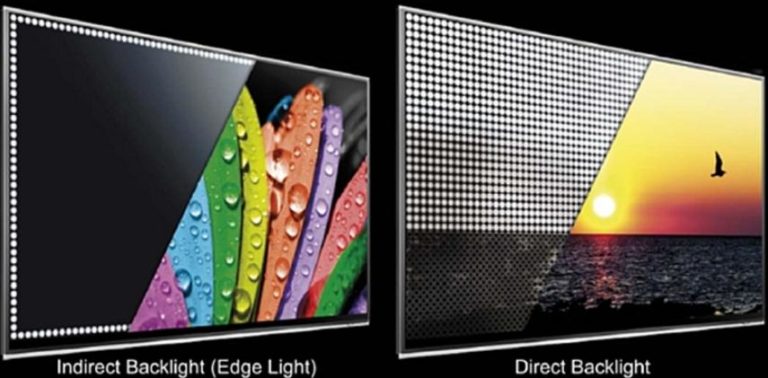Types of LED TV backlighting - which is better Edge or Direct
Many people do not understand the difference between Edge LED backlighting and Direct LED, but this point is important when buying a TV, so it is necessary to deal with it separately. The quality of the backlight and its type determines the image in the TV or on the monitor. Manufacturers are constantly improving systems, but the main options are two.
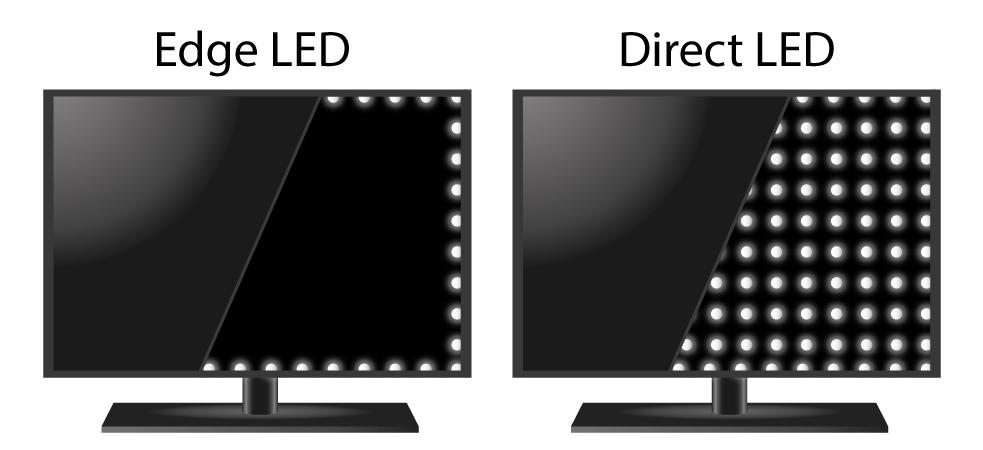
LED-backlighting in the TV - what is it and why do you need it?
To understand the purpose of the backlight, you need to understand the device of the screen. It consists of three main parts - a protective outer layer, a matrix of pixels and diodes. The protective layer prevents the matrix, which is the main element and transmits the image, from being damaged. But since it does not emit light, it is mandatory to have a backlight on the back to see the picture.
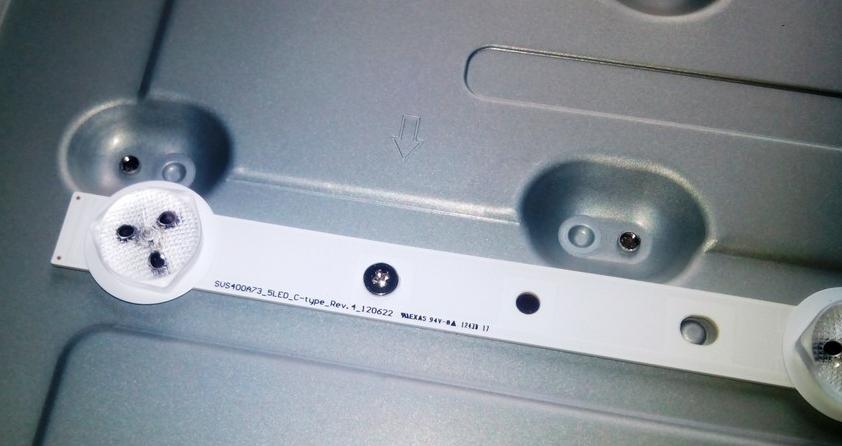
Previously used compact fluorescent lamps - equivalent of those installed in luminaires. But they were too bulky and did not give the desired effect, so they have been replaced by smaller and brighter LEDs. Through their use, manufacturers were able to reduce the thickness and weight of the screen, as well as reduce the power consumption of equipment.
The quality of the backlight depends on the installed diodes, you should not buy the cheapest models.
Types of backlights
To understand the features of the options, it is necessary to understand the device of each. There is nothing difficult in this, as the system is simple and has a similar design regardless of the manufacturer of the TV or monitor and the date of manufacture. Of course, the device is constantly being improved to improve the effect, so in new TVs the backlighting can be an order of magnitude better with similar characteristics.
Direct LED
This variety is used in both expensive and cheap models and has such features:
- LEDs are located behind the matrix and evenly distributed over the entire surface of the screen. This provides high-quality backlighting, but its characteristics depend on the number of diodes. While inexpensive TVs may have 100 diodes installed, the top models have 1000 or even more.
- To make the backlighting more even and to exclude backlights in the areas where the LEDs are located, a diffuser is placed between the LEDs and the matrix. Most often this is a matte sheet of small thickness, able to distribute the light from the diodes evenly over the entire surface.
- The module with diodes is placed behind the screen, so such models are always thicker than the second option. This does not affect the characteristics and service life, but can create inconvenience when installed on the wall.
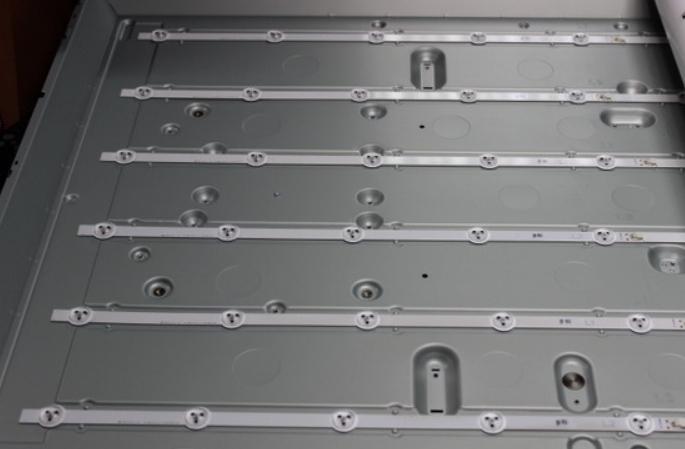
By the way! Some models use FALD technology. This is the same as Direct LED, but there are an increased number of diodes on the surface, which provides better illumination.
Edge LED
This option differs from the previous one in the location of the LED unit and design features:
- Most often use LED strip placed on the left and right side of the screen or on the top and bottom. For quality lighting use diffusers that provide a uniform distribution of light over the entire matrix, they largely depend on the characteristics of the system.
- In expensive models, the side lighting can be located on four sides, which increases quality and allows for improved brightness. But it is important precision positioning of LEDs, with violations of the geometry or deformation of the diffuser, there are dark spots or backlighting on the screen, which is difficult to get rid of.
- Due to the side arrangement of light sources the thickness of the screen is much less. This option is used in the manufacture of thin TVs, as well as monitors for computers.
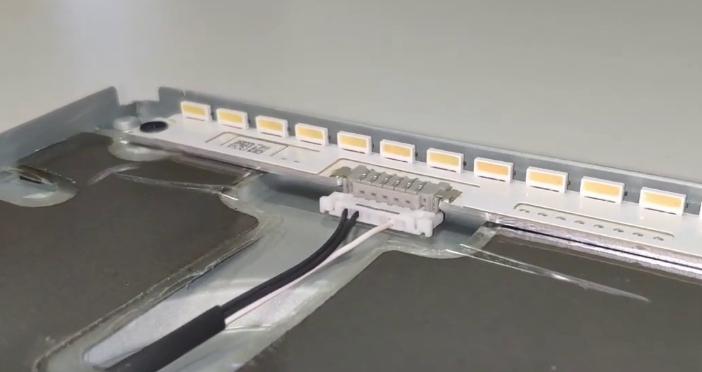
Video: Visual demonstration of Edge LED and Direct LED lighting.
Advantages and disadvantages of each option
To compare the two solutions and understand the pros and cons of each, you need to compare the features of each and highlight the positive and negative sides.
| Direct LED backlight | Edge LED backlight | |
|---|---|---|
| Advantages | Uniform illumination of the entire matrix due to the location of light sources and the presence of the diffuser | High brightness and good image contrast. This applies to quality options with bright LEDs and well tuned reflectors. Screens of this type are bright and well perceived by people's eyes, delivering minimal discomfort |
| Good contrast ratios, you can adjust the perfect image even on a large screen | The thickness of the screen is much less due to the side location of the backlight, which allows you to make compact models without losing the quality of technology and its performance. For example, Slim Direct backlighting means that the TV has an ultra-thin screen, many manufacturers call models in a special way, indicating their minimum thickness | |
| Simple repair of the system due to the convenient location of the backlighting unit. These models are much easier to fix if the LEDs are out of order | Due to the simplicity of the system such models are often on the order of the cheaper, although here it all depends on the manufacturer and the quality of components | |
| On a dark image does not happen flare at the edges and corners of the screen. This is a very important factor for those who want a perfect picture | ||
| If you deform the matrix or housing quality is not reduced, because the diodes are located behind and such problems do not affect them much | ||
| Disadvantages | Greater screen thickness due to the additional illumination module and lower brightness values. | Uneven backlighting in some models, especially often this problem occurs over time, when the matrix is slightly deformed. Another common problem is glow at the edges of the screen in the place where the diodes are installed |
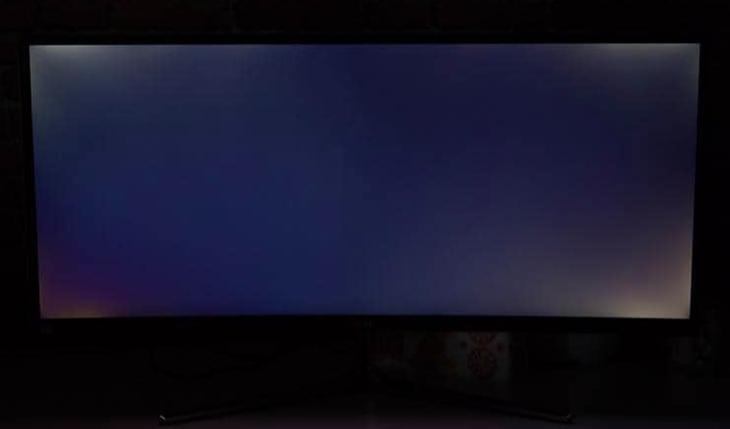
What backlight to choose, what factors it depends on
To make a decision, you need to consider the conditions of use, the location of the TV or monitor, as well as a few additional recommendations:
- Variants with a thin body are suitable for limited space, as well as for direct mounting on the wall. This type is used where thickness matters and it is advisable to choose a thinner model.
- If the TV will be placed on the bracket at a slant, it is better to choose products with straight backlighting. The fact is that over time, the case may become slightly deformed, which in the case of side illumination will lead to a violation of the normal lighting of the matrix.
- When choosing a variant with a side arrangement of diodes, it is worth checking the screen for backlighting when buying. It is best to include the blue color, any problems are most visible on it.
It is better to give preference only to well-known companies with a good reputation.
At the end of the video, will help with the selection of the right backlight.
To choose the type of LED backlighting in your TV or monitor is not difficult, if you understand the features of each option and take into account the nature of the use of equipment. The main thing is to buy equipment from reputable manufacturers, only this way you can guarantee that the claimed characteristics will not differ from the actual.
